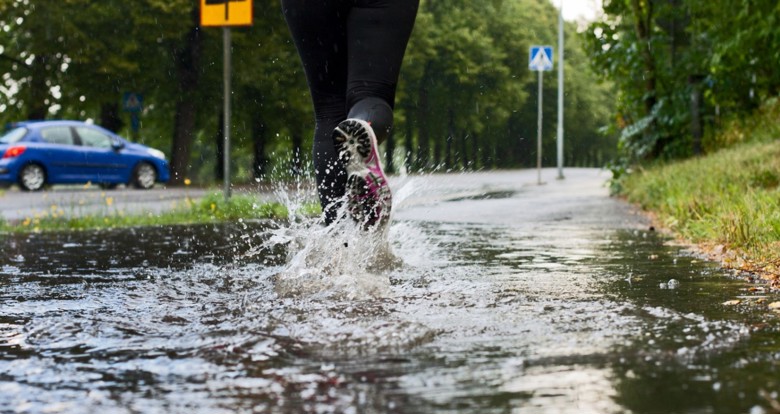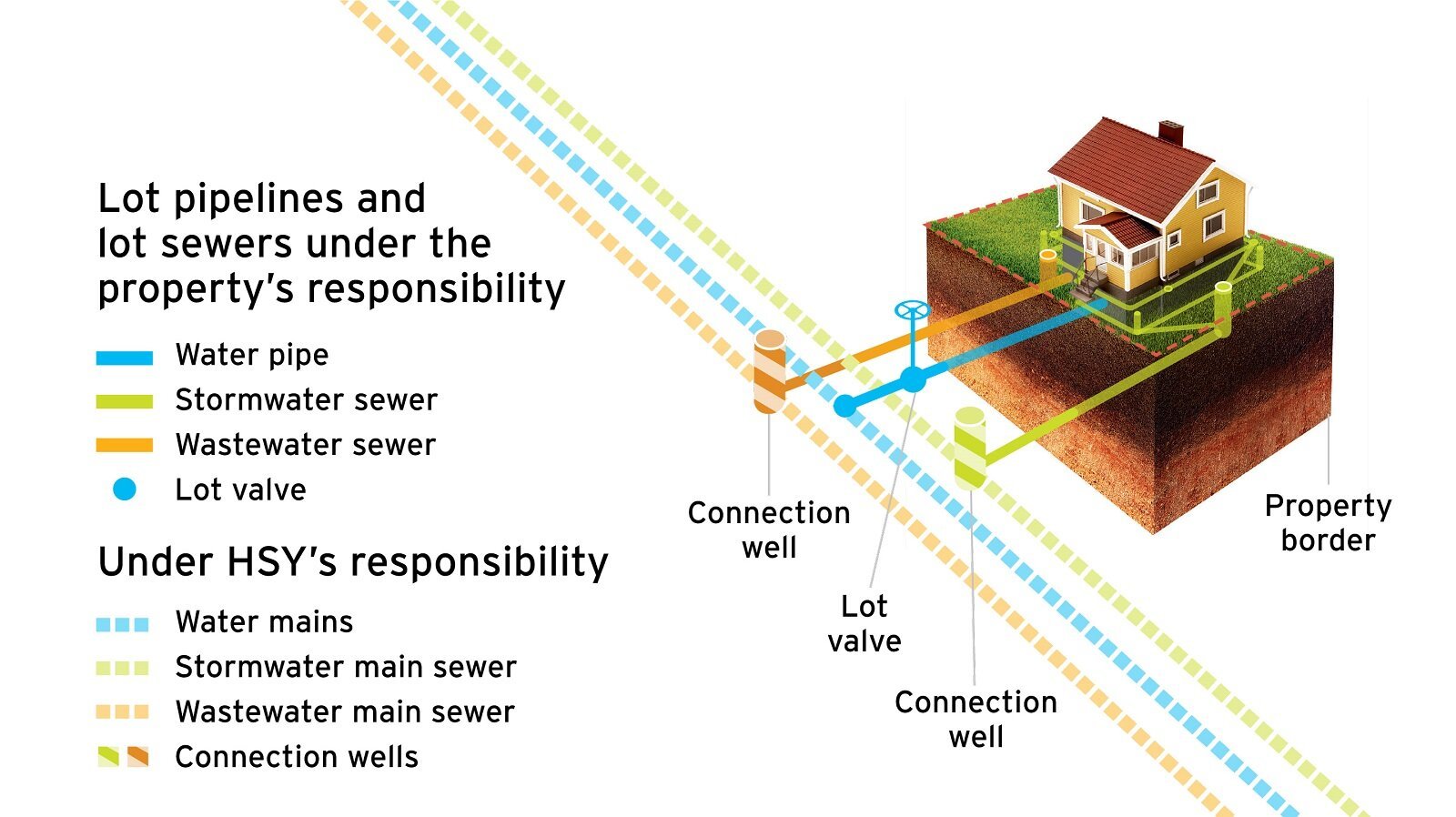Stormwater

When it rains or the snow melts, stormwater is generated in the built environment. Stormwater is rainwater and snow melt that flows along the ground surface, roofs of buildings and other surfaces. Stormwater regulations are also applied to drainage water from the foundations of buildings.
Impermeable surfaces, such as asphalt and roofing materials, increase the amount of stormwater. When there are many such surfaces, the absorption of water into the soil as well as evaporation through vegetation are reduced. The more impermeable surfaces there are, the faster and more stormwater is generated.
Stormwater is usually conducted from the ground surface into stormwater sewers or open ditches, from where it flows into streams, rivers, lakes or the sea. As a rule, stormwater is not treated, but rather discharged into water bodies as such.
Stormwater must not be conducted into a wastewater sewer (Water Services Act, Section 17 d). If stormwater is conducted into a wastewater sewer, there may suddenly be so much water entering the sewer network during heavy rainfall that wastewater pumping stations are unable to pass it on. This causes an overflow, during which untreated, dilute wastewater may flow into a water body. In addition, stormwater cools down wastewater and reduces the treatment efficiency at the wastewater treatment plant.
Stormwater video (in Finnish):
The property owner’s responsibility in stormwater management
The owner or occupier of the property is responsible for the management of stormwater generated on the property and the drainage of the building’s foundations.
Stormwater should be utilised, absorbed into the soil or detained on the lot if possible. Good stormwater management prevents possible harm caused by stormwater, such as stormwater flooding or damage to the property or water bodies.
The property must be connected to HSY’s stormwater sewer if the property is located in the stormwater sewerage area. The location of your own property in the stormwater sewerage area can be checked, for example, from HSY’s map service.
Read more about the stormwater sewerage area.
It is the responsibility of the owner or occupier of the property to build and maintain a lot sewer for stormwater from their lot to HSY’s main stormwater sewer.
You can apply for an exemption from the obligation to connect from your city’s environmental protection authority. However, HSY charges the basic rate for stormwater sewerage from all properties located in the stormwater sewerage area, including those exempted from the connecting obligation.
The stormwater sewer network serves all properties in the area and, for instance, during heavy rains, it helps in stormwater management even if at other times the property’s stormwater would be absorbed or conducted e.g. into an open ditch.
It is the responsibility of the property to ensure that the property’s sewerage systems have been implemented so that if the water level rises above street level, water does not flow towards the property.
The property has been assigned a full supply level in the connection statement. The property must protect any spaces built below this level from flooding. When the property sewers below the elevation level provided in the connection point statement, it is always the property’s responsibility to protect the premises.
Stormwater must not be conducted into a wastewater sewer.
Watch the video: How to conduct stormwater correctly (in Finnish)
Stormwater and foundation drainage water must not be conducted into a wastewater sewer, but rather it must always be discharged into a separate stormwater system. Incorrect connections must be removed at the latest when the property’s pipes are renovated. This secures the operation of wastewater treatment and protects nearby water bodies.

Pictured: The lot water pipes and lot sewers are the responsibility of the property owner. The owner is also responsible for any costs of repairing them.
HSY is responsible for the construction and maintenance of the main stormwater sewer network in the stormwater sewerage area
- We use the fees charged for stormwater sewerage to cover the costs of sewerage.
- For properties connecting to the stormwater sewer network, we indicate a connection point through which the stormwater from the property is conducted to HSY’s stormwater sewer network. The owner or occupier of the property is responsible for the construction of a lot sewer for stormwater from the lot to the connection point indicated by HSY.
- We take care of the planning and implementation of stormwater management in cooperation with the member municipalities, i.e. Helsinki, Espoo, Vantaa, and Kauniainen.
- In stormwater sewers, stormwater is conducted into the nearest water body.
- As a rule, stormwater is not treated.
Cities are responsible for stormwater management as a whole
- Cities prepare a stormwater management plan and take care of stormwater management in public areas, such as water removal from streets and flood routes. During heavier rains, for example, streets serve as flood routes and stormwater is conducted directly into water bodies along the surfaces.
- Cities are responsible for the municipality’s stormwater system (e.g. open ditches and detention structures, such as stormwater tanks).
Learn more about the stormwater solutions at Marketanpuisto park in Espoo (watch the video, in Finnish):
The stormwater solutions at Marketanpuisto park in Espoo (watch the video, in Finnish)
Basements should be protected against heavy rains. During heavy rainfall, water can rise very quickly and unexpectedly in the well, putting basements built below flood level at risk of flooding if they are not properly protected.